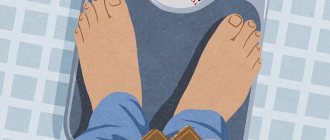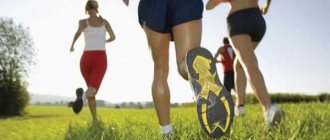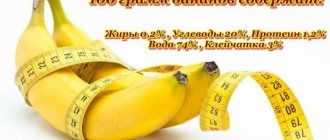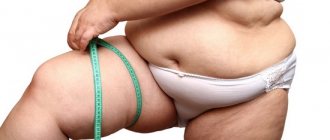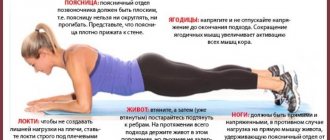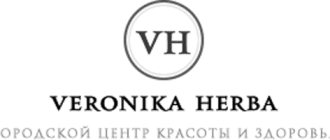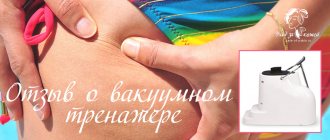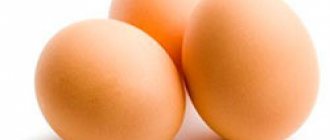What is cellulite?
Dermatocosmetologist, expert of the Council on Cosmetic Safety of the European Union, founder of Meder Beauty Sciences Lab (Switzerland), Tiina Orasmäe-Meder describes cellulite as follows:
“Cellulite today is defined as an age-related estrogen-dependent structural pathology of subcutaneous fat tissue, manifested by lymphostasis, venous stagnation and fibrosis of certain areas.
Despite the fact that this problem is certainly aesthetic and does not fall under the definition of a “disease,” under certain conditions, severe cellulite leads to discomfort and a deterioration in the quality of life, and is sometimes even accompanied by health problems. The psychological significance of the defect can be extremely high and often leads women of a certain psychological type to depression, nervous breakdowns and dysmorphophobia.”
Structure
The main reserves of fat in the body are located in subcutaneous fat. This is part of the deepest layer of the skin - the hypodermis. There are also collagen and elastin fibers, nerve endings, blood vessels, lymphatic vessels, and sweat glands.
A fat cell consists of 90-95% fat, it can greatly increase in size, accumulating more and more fat inside itself, and “deflate”, losing fat and decreasing in size (but not completely disappearing from the body). You can read more about fat here.
Subcutaneous fat also contains connective tissue fibers - collagen and elastin, which surround fat lobules, that is, groups of fat cells, and form a network with cells.
Why does cellulite appear?
Cellulite is a change in the structure of subcutaneous fat in problem areas where blood circulation and lymph flow deteriorate, congestion and swelling appear, where tissues lack nutrients and oxygen.
Cellulite has four signs that mutually reinforce each other:
- Violation of microcirculation of blood and lymph.
- Increase in subcutaneous fat (layer of subcutaneous fat).
- Increase and thickening of connective tissue.
- Action of sex hormones.
Violation of microcirculation of blood and lymph
This is often where cellulite begins.
The skin has a branched and deep vascular network, represented by both large vessels: arteries, veins, lymphatic vessels, and small ones - capillaries. It is through the walls of capillaries that cells exchange water and gases with the blood (they receive oxygen and give off carbon dioxide), receive nutrients and hormones. Lymphatic capillaries remove excess fluid, proteins and metabolic products from tissues.
The effective operation of the capillary system directly depends on the condition of large vessels - if the venous outflow is disrupted, the circulation of blood and lymph slows down. Stagnation of fluid in the vessels stretches their walls, disrupts their elasticity, leads to an increase in the permeability of the walls and the release of fluid out into the space between the cells. As a result, swelling occurs and pressure in the tissues increases.
In a vicious circle, swelling contributes to even greater disruption of microcirculation, and substances released when the walls of blood vessels are damaged cause the thickening of connective tissue partitions, which, squeezing the lobules of adipose tissue, create unevenness on the skin.
If a fat cell loses connection with the microvasculature (with capillaries), the transport pathways are disrupted, and something like a “sewer blockage” is formed.
Thus, lymphostasis and impaired venous circulation are one of the causes of cellulite in the early stages.
Tiina Orasmäe-Meder: “Cellulite and varicose veins almost always form a vicious circle. Varicose veins aggravate the severity of cellulite. Stage 3-4 cellulite, in turn, can cause difficulty in venous outflow in the lower extremities and contribute to the development of varicose veins.”
Increase in subcutaneous fat
When the body takes in more calories than it expends, the excess energy is stored in fat cells. The enlarged adipocytes become crowded, they begin to put pressure on each other and go beyond the cells of the connective tissue, pushing through it, like a mattress through a mesh bed frame.
Connective tissue fibrosis
Slender women have cellulite, and this suggests that excess weight is an important, but not the main cause of cellulite.
Swelling and an increase in the viscosity of the intercellular fluid lead to cell deformation and compression of blood vessels, which causes hypoxia (lack of oxygen) in the tissues. The production of lactic acid under these conditions activates proline hydroxylase, an enzyme that is involved in collagen synthesis.
As a result, the connective tissue loses its elasticity, becomes stiff, and the fibers themselves become larger and knots appear. This subsequently leads to fibrosclerosis in the connective tissue septa: the formation of hard, inelastic fibrous tissue similar to scar tissue.
Hormones
Another “trigger” for the formation of cellulite is female sex hormones.
Estrogens increase the activity of enzymes responsible for storing fat, which causes fat cells to increase in size. On the membrane of each fat cell there are two types of receptors that control the processes of accumulation/breakdown of fat inside it:
- Alpha receptors. They stimulate the formation of new fat and its accumulation (lipogenesis).
- Beta receptors. They stimulate the release of fat from the fat cell for its subsequent breakdown (lipolysis).
Women's buttocks and thighs have much more receptors responsible for lipogenesis. Fat accumulation under the influence of estrogen occurs first in these areas, and it is difficult to get rid of it using traditional methods. It is assumed that this fat is used as a source of energy for breastfeeding in case the energy supply from food is insufficient.
Estrogens also increase the level of hyaluronic acid in the dermis, which increases the amount of intercellular fluid and converts soluble collagen into insoluble. All together, this leads to the formation of nodes of different sizes, visible on the surface of the skin (see previous paragraph).
Proper nutrition and walking
Advertised creams and other products, of course, make their contribution to the fight against fatty subcutaneous plaques, but, as in the case of any cosmetic products, they do not replace the correct approach to solving the problem. Only a well-designed diet and walks in the fresh air can lay the foundation for the “health” of adipose tissue. Without these two components, it is simply impossible to achieve the desired result. The problem will either remain or cellulite will only partially go away.
Correct drinking regime
For every kilogram of your own weight, you need to drink 20-30 milliliters of clean water. Carbonated drinks, natural juices, coffee and tea are not included. To control the amount of liquid you drink, take a bottle and fill it with water, and then, in between doses, drink from a container of 50 to 100 milliliters. The habit of drinking two glasses of water when waking up is considered useful.
Nutritious and varied nutrition
No harmful foods - alcohol, sweets, yeast baked goods, sugar, smoked foods, white flour, salty foods, a lot of coffee. Good and normal stool plays an important role. You should definitely eat foods high in pribiotics - natural fermented milk products, sauerkraut, as well as fiber-rich vegetables containing psyllium fiber, flaxseed, and oil cakes. The menu should be compiled taking into account the individual characteristics of the body.
The amount of carbohydrates must be low. The diet includes foods with low and medium GI. These are not large-sized fish, vegetables and meat. It is recommended to eat no more than 500 grams of fruit per day, medium portions of cereals, healthy vegetable oils, and fermented milk products with moderate fat content. The main thing is that carbohydrates are not consumed in unlimited quantities.
Particular attention should be paid to minerals and vitamins. And if Omega-6 is present in excess in the diet, then Omega-3 is in short supply. Spirulina, olive oil, seaweed, avocados, walnuts, and fish oil can compensate for the lack of fatty acids. This food must be included in the diet.
The minimum physical activity is half an hour of walking at a moderate pace. This is approximately 2.5-3 kilometers. Instead of cardio, especially after 30 years, preference should be given to athletic exercises, most of which can be done at home. Your own weight will be an excellent load. A slow pace, unlike a fast one, can exhaust you until your knees tremble, which is an undeniable advantage. It is recommended to do calanetics, Pilates, oxysize and bodyflex.
Stages of cellulite
Cellulite occurs in several stages, and each has its own symptoms.
Stage 1
Edema. There is an increase in the permeability of capillary walls, accumulation of intercellular fluid between fat cells. The fluid compresses the lymphatic vessels, which disrupts the outflow of lymph, which results in the appearance of local swelling. Cellulite becomes visible under pressure or under certain lighting.
Without compression, it may appear in the second half of the cycle. Many women have this form of cellulite.
Stage 2
Chronic stagnation of lymph, venous stagnation in the subcutaneous fatty tissue of problem areas. Cellulite becomes visible when standing and disappears when lying down (“soft” cellulite).
Stage 3 (A and B)
In addition to chronic stagnation of lymph and blood, changes in connective tissue are added. At stage 3A, fibrosis may remain local, i.e. appear in small areas. At stage 3B it becomes widespread.
Microcirculation deteriorates even more, the skin turns pale, becomes colder, and burst blood vessels appear. Cellulite is visible both in a standing position and locally in a lying position (“hard” cellulite).
Stage 4
Fusion of micronodules of connective tissue with the formation of macronodules, mobile and painful when pressed. Cellulite is visible both in a standing position and in a lying position along the entire surface of the thigh. Widespread fibrosis and local sclerosis (scars in connective tissue).
Dry brush massage
There are many anti-cellulite massage techniques for the buttocks and legs - with a rolling pin, cans, Lyapko rollers, bamboo sticks, and also manually. At home, the most effective and affordable is dry, performed using a brush. It allows you to stimulate the outflow of lymph, helps normalize blood microcirculation, and also gets rid of dead layers of the epithelium. When the massage is completed, the skin is completely ready to absorb the healing composition applied after the procedure. If the session is carried out not only for problem areas, then all the body’s reserves are used, cleansing processes are activated, which is an undeniable advantage for health.
To perform a lymphatic drainage dry massage, you need to take a dry brush with natural bristles. If this is a special device that is worn on the hand, then you can take two at once. It is better to purchase brushes not only with a loop for putting on the palm, but also with an elongated handle that allows you to massage your back. It is permissible to take not only special massage ones, but also shoe ones, most importantly, with a wooden base.
The correct technique for performing dry anti-cellulite massage with a brush involves:
- movement in the direction of lymph flow from bottom to top, from the periphery and to the center;
- the pace should be slow and drawn-out, but not fast and abrupt;
- you need to press on the skin until a slight tingling occurs and the skin turns pink, the sensations are pleasant, but not painful;
- it is permissible to move no more than three times in one direction;
- First, the skin is stroked with a direct movement, and then in a circular warming motion.
Movement pattern for the whole body
Brush massage from 52-year-old supermodel Elle Macpherson – Everything will be fine
When there is no time for a full massage, you can limit yourself to problem areas. The first thing you need to do is stimulate the inguinal lymph nodes with light, leisurely pressure on both sides simultaneously.
Procedures to complete the massage
When the session is completed, take a shower. The ideal option would be a contrasting one. You can limit it only to problem areas by pouring cold water on your legs, thighs and butt. The skin is blotted with a towel. Apply lotion with the addition of essential oils with an anti-cellulite effect. These natural products have a wonderful aroma and have proven to be highly effective. The best oils against cellulite are lemon, grapefruit, rosemary, fennel, geranium and juniper.
Duration of dry massage course
The number of procedures is regulated individually. It all depends on how sensitive your skin is. During the period of struggle with orange peel, massage is recommended to be done every other day. A similar frequency should be maintained in the first month. When the skin becomes smooth, maintenance massage is done at least 2-3 times a week on an ongoing basis. Otherwise, cellulite will make itself felt again.
Forbidden
You can't massage every day. Sessions are contraindicated for inflammatory dermatological problems, endocrine system disorders, and high body temperature.
How to get rid of cellulite?
There is no magic method; everything works only in combination and depends on the stage of cellulite. An integrated approach consists of three areas:
- Home care: proper nutrition and diet, sports, active lifestyle, giving up bad habits and everything that falls under a healthy lifestyle, as well as self-massage and creams.
- Professional procedures.
- Treatment of varicose veins.
Proper nutrition
Fat- and cellulite-burning products do not exist in nature. Neither grapefruits, nor ginger, nor spices, nor detox diets work for these purposes. The internal processes occurring in the subcutaneous fat tissue, as well as the level of hormones, cannot be directly influenced by food.
By following a diet with a calorie deficit, you can reduce the volume of problem areas, and by reducing the layer of fat on the hips and buttocks, cellulite will visually become smaller. By giving up foods that are too salty and high in carbohydrates, you can partially get rid of swelling. But you shouldn’t hope to completely get rid of cellulite through diet.
Eliminate smoked, pickled, salty, fatty, and alcohol from your diet. Choose minimally processed whole foods - vegetables, grains, meat, fish, poultry, healthy (vegetable and omega-3) fats. Drink enough clean water.
In the second half of the cycle, many women are prone to swelling, which makes cellulite more visible. Therefore, it is especially worth excluding salty and pickled foods here. You can also use herbal teas with a mild diuretic effect if you have no contraindications (consult your doctor).
Sport
A sedentary lifestyle impairs venous outflow and lymph circulation, which increases cellulite.
Both strength training and cardio improve blood circulation, strengthen the walls of blood vessels, help get rid of swelling and, of course, excess fat. But there are no special “anti-cellulite” exercises, and it is impossible to lose weight in the desired area by working it in different ways, be it the stomach, buttocks or thighs. The pumped muscle and fat are not directly related, and a burning sensation in the muscle is not an indicator that the fat is “melting.”
Mobility during the day outside the gym also plays a big role: walk more, don’t sit in one position for a long time, use elevators and transport less. If you are on your feet for a long time, wear comfortable shoes. Avoid clothes that are too tight.
Massage
Massage improves blood circulation and lymph flow, eliminates intercellular swelling. But it does not get rid of fat: fat cannot be mechanically squeezed out of a fat cell with your hands. Under no circumstances should the massage be painful or cause bruising or damage to blood vessels. Instead of benefiting, such a massage can worsen the problem.
Creams, wraps
At stage 1, creams can help in combination with other methods, improving microcirculation (especially against the background of massage).
Professional treatments
LPG (endermology)
The method has been used for more than 40 years. Its essence is a mechanical effect on the skin and subcutaneous layer using a “handle” - two simultaneously rotating rollers that grab a layer of skin, form a fold from it and simultaneously apply a light vacuum to it. The procedure is aimed at eliminating congestion and swelling, but not at getting rid of fat.
Pressotherapy
Mechanical lymphatic drainage. During the session, the body is alternately exposed to periods of vacuum and barocompression, which are created by the movement of a wave of compressed air in the cuffs worn. There is an improvement in blood and lymph circulation and elimination of edema. The procedure does not remove excess fat.
Ultrasonic cavitation
Under the influence of low-frequency ultrasound with parameters of 38-41 kHz, a pressure of 0.6 kPa and a certain flow density, a cavitation effect occurs in the fat cells of the treated area - the formation of a large number of microbubbles. They increase in size and liquefy fat. When bubbles collapse inside a fat cell, a hydrodynamic shock occurs, a kind of micro-explosion that damages the cell membranes, and first of all, the most crowded ones. Most of the fats that enter the intercellular space (up to 90%) are excreted through the lymphatic system, 10% enters the bloodstream.
The procedure is not recommended for diseases of the liver and biliary tract and is not used for general weight loss if you are overweight.
RF therapy
RF therapy is high-frequency electric current. Electrical impulses create an electric field in the subcutaneous fat, heating it. When heated, the fat in the cells breaks down into its constituent glycerol and fatty acids, which are then removed from the body with the help of lymph, and then through the excretory system. It is also not recommended for diseases of the liver and biliary tract.
Liposuction
Heavy artillery. A surgical operation in which fat is removed using vacuum suction. The method is suitable when local fat deposits are very pronounced and cannot be removed by other methods. Disadvantages - the operation is traumatic and the consequences of surgical intervention can be lymphostasis and sclerosis of the tissue, as well as hematomas and a long recovery period. With an excess of calories in the diet, fat will be deposited in other areas. That is, liposuction does not solve the problem of excess weight unless the lifestyle is changed and proper nutrition is not established.
Mesotherapy
Mesotherapy is the introduction of active substances using numerous injections into the subcutaneous fat. The substances are designed to break down fat cells or fibrous connective tissue, improve vascular tone, etc. Thus, these are means of local fat loss.
The method has its drawbacks:
There are complications in the form of bacterial contamination of subcutaneous fat when using an injection gun. This can cause inflammation of the deeper layers as a result of infection with streptococci, often living on the surface of the skin.
The disadvantages also apply to the compositions of cocktails for injections. Many drugs have a damaging effect (dissolution of the membranes of fat cells or fibrous nodes). Thus, the well-known phosphatidylcholine is prohibited in France, since there are known cases of tissue necrosis due to its inaccurate administration.
In addition, regular and numerous injections can worsen cellulite - due to local stress, the release of inflammatory mediators and possible fibrosis at the site of damage.
Tiina Orasmäe-Meder: “Every year there are lawsuits regarding complications. In the USA, several years ago, the Association of Plastic Surgeons and Dermatocosmetologists vetoed the use of mesotherapy and refused to provide legal assistance to doctors who work with it - it is too expensive. In general, the method came from veterinary medicine: mesotherapy was used to increase milk yield and introduce circulation stimulants into the udder tissue of cows. He should have stayed there."
What Science Says
Science is not encouraging. “There are a huge number of cellulite reduction products and treatments available on the market, but no systematic review has been conducted to date to assess their effectiveness.”
A systematic review of the scientific evidence on the effectiveness of cellulite treatments was carried out (Luebberding S, et al. Cellulite : an evidence-based review.
Am J Clin Dermatol. 2015)
What is a systematic review? This is a type of scientific research in which scientists search for all existing studies and publications that meet strict criteria. Then they are systematized, the results are summarized and a conclusion is drawn. This review is of greater value than a single study because it allows us to exclude various random and methodological errors and bias of the authors of individual studies.
A total of 67 scientific articles were examined for compliance with the following conditions:
- the presence of a control group (for comparison with the one receiving treatment);
- randomization (distribution into groups in random order);
- blind method;
- a large number of participants so that there are no statistical errors;
- description of the statistical methods used;
- results and level of evidence.
Most studies, including laser, light, radiofrequency, and other methods, had serious methodological flaws, did not include all conditions, or did not provide sufficient statistical analysis. Therefore, of the 67 studies, only 19 were eligible and included in the systematic review.
Conclusions: No clear evidence of effectiveness was found in any of the cellulite treatments examined in the review. However, there was some evidence of potential effectiveness for shock wave therapy and the 1440 nm Nd:YAG laser.
Treatment of varicose veins
Considering the close relationship between cellulite and varicose veins, in addition to anti-cellulite procedures, it is necessary to engage in the diagnosis and treatment (prevention) of varicose veins. To do this, you should contact a phlebologist.
For varicose veins, the following are contraindicated: strong mechanical pressure, vacuum, warming procedures. It is necessary to carry out gentle lymphatic drainage, apply external agents that have a venoprotective effect, wear compression garments and take medications (both are prescribed only by a doctor).
dietary supplements
Various nutritional supplements deserve a separate point as the easiest way for women to get rid of cellulite.
What does not work:
Diuretics - diuretics
With the loss of fluid, body volumes decrease, and the manifestations of edematous cellulite go away quite quickly. But diuretics have many side effects and complications. External: dryness and flaking of the skin, decreased tone, the appearance of fine wrinkles in the eye area and around the mouth. Internal, hazardous to health: heart rhythm disturbances, increased blood viscosity, risk of blood clots, kidney failure. A bonus is the addiction to the drug and the body’s inability to independently remove fluid that develops over time.
Calorie blockers
Medicines that block enzymes that break down carbohydrates/fats, causing unprocessed carbohydrates/fats to be eliminated from the body and fewer calories to be absorbed by the body. Side effects: bloating, flatulence and indigestion as a result of the high content of carbohydrates and fats in the stool. These drugs change eating behavior for the worse: a person gets used to eating more, because half of it is not digested. Therefore, upon withdrawal, rapid weight gain often occurs, because the person has not acquired useful and healthy eating habits.
Special anti-cellulite complexes
Plant extracts, extracts, biologically active complexes. There is no particular benefit and no particular harm - drugs that can interfere with the internal processes of the body bring not only benefits, but also have side effects, therefore they are medicines, not dietary supplements. Here, the risks can only be associated with individual intolerance to the components.
Sportspit: fat burners
Fat burners are not as effective for weight loss as they interfere with the functioning of various organs and systems, are addictive, and have many side effects. In addition, excess weight is not the only and not the main cause of cellulite.
Fat burners are divided into groups:
- Thermogenics. Stimulate the central nervous system, suppress appetite, increase motor activity. Side effects: irritability, anxiety, trembling and tremor, insomnia, palpitations, arrhythmia, there is addiction and withdrawal effects.
- Anorectics are appetite suppressants. They suppress the hunger center and stimulate the satiety center. Side effects: heart failure, heart valve damage, agitation and insomnia.
- Thyroid stimulants. These are drugs that increase the hormonal activity of the thyroid gland or are themselves hormones. Intervention in the functioning of the thyroid gland without indications can lead to secondary hypothyroidism, i.e. the organ will stop producing hormones due to constant stimulation. This threatens serious metabolic disorders and hormone replacement therapy throughout life.
What works in the complex:
Medicines for the prevention and treatment of varicose veins
They usually contain diosmin, hesperidin, etc. They increase the density and elasticity of blood vessels, thin the blood, and relieve swelling. Must be prescribed by a doctor according to indications.
Light herbal diuretics
In the second half of the cycle, many women are prone to swelling. In order to reduce swelling, you can use herbal teas with a mild diuretic effect at this time, unless you have contraindications to a specific drug (consult your doctor before taking).
Self-massage
There are many different devices for home massage - from special shower heads to massage vacuum cans. Considering that no massage can destroy fat cells (only hardware methods can do this), its task is to improve microcirculation in problem areas and lymphatic drainage. One of the effective and vein-friendly types is self-massage with a brush.
Hardware cosmetology in body contouring procedures and cellulite treatment
Endermology
This is a patented name for a method of treating cellulite and obesity through mechanical kneading of tissue with two motorized rollers capable of capturing various folds inside the treatment chamber
Indications for endermology:
- cellulite treatment;
- reduction in the volume of subcutaneous fatty tissue;
- formation of body contours;
- improvement of skin structure;
- relaxation;
- increased blood supply in the treatment area;
- increased lymph flow.
Effect of endermology:
- improves skin tone;
- stimulates lymph flow and blood circulation;
- models the contours of the figure;
- accelerates the elimination of toxins;
- enhances lipolysis;
- has a pronounced anti-stress effect;
- the drainage effect enhances muscle activity.
Complex effects of hardware techniques and cellulite treatment
- rf therapy
- chromotherapy (color therapy)
- ultrasound therapy
RF therapy
Exposure of the skin to high-frequency electric current. The most important significance of RF therapy is the launch of physiological, true lifting.
RF (Radio Freguence) is alternating current in the radio frequency range from 30 kHz to 3000 GHz. RF therapy is based on the effect of high-frequency current of lower intensity on the skin.
Today there are 4 types of devices operating on this physical factor:
- monopolar,
- bipolar,
- multipolar
- fractional RF.
They differ fundamentally in the volume of impact on tissue, depth of work, power, subjective sensations, and the ability to control the volumetric distribution of the electromagnetic field.
Read more in the article: “How to choose a device for RF therapy.”
Low Level Laser Treatment (LLLT)
LLLT with a wavelength of 980 nm is a non-invasive and non-thermal approach to performing procedures. The possibility of combining techniques with LLLT technology can significantly change the silhouette, give the skin a radiant appearance, make it elastic and have a toning and moisturizing effect.
Color therapy in cosmetology and cellulite treatment
Each wavelength corresponds to a specific color and has a specific healing effect. They can be used with traditional cosmetic procedures to enhance and accelerate the desired results. Before starting to work on the problem area of the body, the color most suitable for its therapeutic properties is selected. Chromotherapy has a global positive effect on the body as a whole, not only at the physiological level, but also at the psychosomatic level.
Endermalogical massage combined with chromotherapy allows you to achieve pronounced results. LEDs that emit light of different wavelengths onto the skin have a beneficial effect on the biological functions of the body.
Vacuum
This is a lymphatic drainage effect on tissue. It stimulates the lymphatic system and helps eliminate toxins from the body, improving the color and appearance of the skin.
Vacuum always works in combination with shock wave technology. Often the result is predominantly attributed to the shock wave alone, but in reality also due to vacuum aspiration.
Bottom line
In order not to turn life into a struggle, it is worth remembering that:
- 90% of women have cellulite and this is an age-related change in subcutaneous fat tissue.
- Poor nutrition, stress, bad habits, lack of exercise and a sedentary lifestyle - all this greatly affects the manifestation and progression of cellulite.
- There is not a single drug/procedure/other method by which you can 100% get rid of cellulite, once and for all.
- Small amounts of cellulite can also occur in those who have been exercising regularly for a long time and following a healthy diet.
- The problem can be partially solved by an integrated approach, that is, changing lifestyle and using different methods simultaneously.
- There is a line where healthy care of appearance ends and the mania for getting rid of any signs of cellulite begins, requiring more and more resources (time, money).
How to properly treat stretch marks - when to start
The outcome of treatment for stretch marks largely depends on three factors:
- start time of treatment. You need to start making efforts while the stretch marks are still pink or purple. They respond well to masks, wraps, and massage. But when they turn white (this happens after about six months), it is no longer possible to seriously change the situation.
- set of methods . For the fastest possible results and successful treatment, it is necessary to use several methods at once, including proper nutrition, exercise, massage and all kinds of applications.
- regularity of use . Only regular procedures can guarantee success in the fight against stretch marks. However, this does not mean that the problem can be solved in a short time. The treatment will be long-term.
